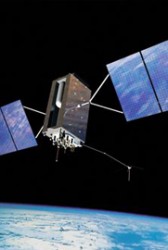 The National Oceanic and Atmospheric Administration moved closer to its March 2016 launch date for the next-generation Geostationary Operational Environmental Satellite R-Series with the completed integration of all instruments aboard the weather forecasting platform.
The National Oceanic and Atmospheric Administration moved closer to its March 2016 launch date for the next-generation Geostationary Operational Environmental Satellite R-Series with the completed integration of all instruments aboard the weather forecasting platform.
The GOES-R now carries an advanced baseline imager, a geostationary lightning mapper, the Space Environment In-Situ Suite, Extreme Ultraviolet and X-ray Irradiance Sensors, a solar ultraviolet imager and a magnetometer, NASA said Monday.
NOAA and NASA expect all six instruments to enhance space and terrestrial weather forecasting and hurricane tracking, which officials said could mean better lead times against severe storms and disruptions in communications due to solar flare activity, and more meaningful insights for aviation flight route planning and climate change research.
We are now focusing our efforts on the environmental testing phase, the next step for the GOES-R spacecraft, to ensure the satellite is prepared to withstand the rigors of launch and operation in the extreme environment of space,†said Greg Mandt, GOES-R system program director at NOAA.
Lockheed Martin and Harris Corp. are the respective prime contractors for the space and ground segments of the GOES-R project.




